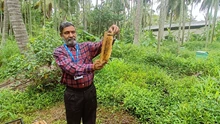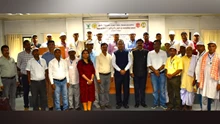
Amid the discourse over farmers burning the stubble in their fields across various parts of northern India and the worsening air condition in the national capital region due to it, several farmers have chosen to go ahead with the partial stubble-burning method this year. Here, we have brought all that you need to know about the technique, and if it comparatively lessens the pollution level in the air or soil.
What is partial stubble burning?
The two types of paddies- short and long duration, fall between the height of 4 - 5 feet respectively. The machinery that the producer uses to harvest paddy removes the upper part of the crop, leaving leftover stubble nearly 15 - 18 inches long behind it. The chopped-off portion of nearly 2.5 feet is left by it after separating the grain from it, called the loose stubble or loose straw.
Several farmers are insisting that they are leaving this loose part of the plant to dry for the next 2-3 days, and then setting it on fire as it is resulting in the burning of the leftover portion only and not the green part of the plant still standing on the field. This process is called partial stubble burning.
Why have many farmers opted for the partial stubble-burning method this year?
Over 1 lakh stubble management machines have been provided by the state and several individual farmers and farmer groups have bought these on subsidy. Though, those who cannot purchase the machines and yet wishes to manage their stubble, often rent it from other farmers or societies during the season.
However, despite having three machines including a Happy Seeder, Smart Seeder, and Super Seeder, many small-scale producers are going after partial burning of stubble. An official familiar with the matter told that the above-mentioned machines make sure that there is no need for the burning of stubble, even the partial burning of loose straw, as the removal of the remaining stubble is not needed to sow wheat for the next season.
According to the experts, farmers usually tend to remove the stubble as they see it as a threat to the quality of their soil as well as their next cultivation, while it’s not. Some farmers who did not wish to burn the stubble in their farms told that they rented a Super Seeder machine to sow wheat, though they had to burn it after the owner of the machine told them to get rid of the stubble as it would help the Seeder work smoothly.
Meanwhile, an official said that farmers tend to clean their fields while sowing the new crops, and except for the Super Seeder, all other machines leave stubble in the field hence to avoid the situation, producers are opting for the partial burning method which causes soil pollution and major health concerns.
He further stated that instead of stressing on a cleaner look for their fields, farmers should focus on keeping the environment clean and must reconsider burning the stubble, even the partial burning. Experts believe that if farmers only set the loose straw accumulated at 8-10 spots instead of the entire field, the air pollution in such cases is likely to be less.











